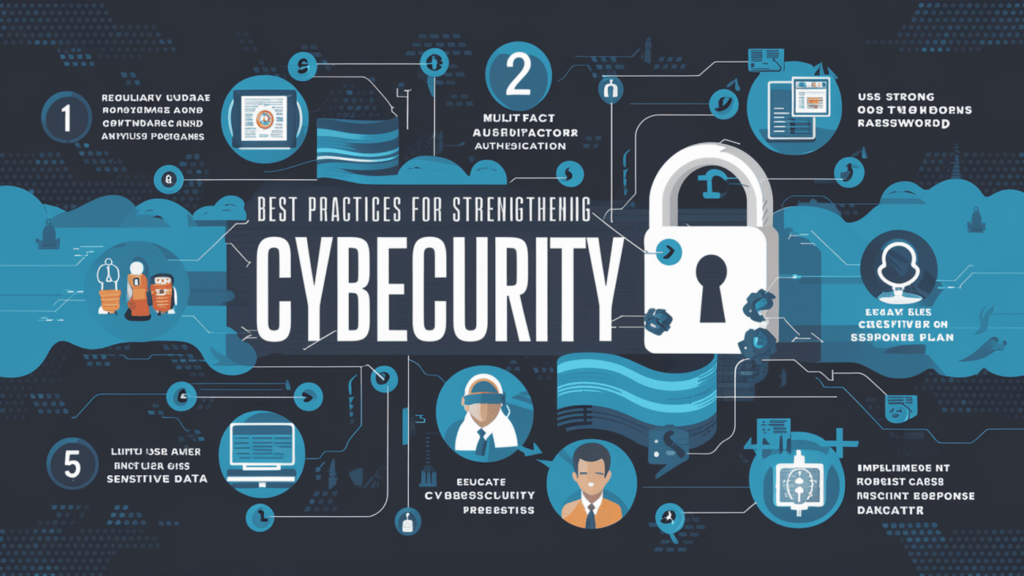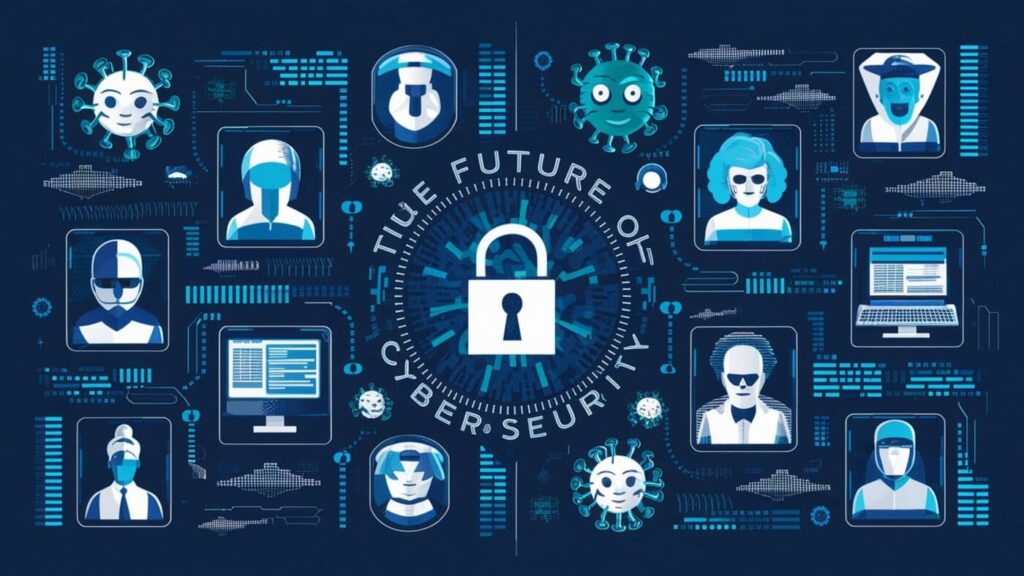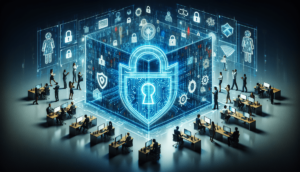Cybersecurity, the practice of protecting systems, networks, and data from digital attacks, is essential as we navigate online. With 541.7 million computers connected across more than 250 countries, the need for robust cybersecurity measures has never been more critical.
At MIT Consulting, we offer comprehensive cybersecurity services, tailored to defend against a wide array of cyber threats including malware, viruses, and unauthorized access. Our focus on network security, information security, and cloud security ensures that your digital world is safeguarded against the evolving landscape of cyber attacks.
Understanding Cybersecurity
Cybersecurity is a critical field dedicated to protecting networks, devices, and data from cyber attack, unauthorized access, or criminal use. It ensures the confidentiality, integrity, and availability of information, which are fundamental to maintaining the trust and functionality of our digital systems. Unlike information security, which focuses solely on data protection, cybersecurity encompasses a broader scope, safeguarding all digital assets.
Key Differences and Definitions
- Cybersecurity vs. Information Security: While both are crucial, cybersecurity is broader, covering all aspects of digital protection, whereas information security is specific to data.
- The CIA Triad: Stands for Confidentiality, Integrity, and Availability, forming the cornerstone of cybersecurity principles.
The Growing Need for Cybersecurity
The frequency and sophistication of cyber attacks, including phishing, ransomware, and malware, are on the rise, making robust cybersecurity measures more important than ever. These threats not only cause significant financial and reputational damage but also pose serious risks to critical infrastructure like communication and healthcare systems.
The Role of Cybersecurity Professionals
Cybersecurity experts are increasingly in demand to combat the growing threat landscape. Their role involves implementing strong security protocols, utilizing complex encryption methods, and developing proactive countermeasures to ensure the digital safety of organizations and individuals alike. According to the U.S. Bureau of Labor Statistics, the field is expected to grow significantly, with a 32% increase in employment projected by 2032.
At MIT Consulting, we specialize in providing top-tier cybersecurity solutions, ensuring that our clients’ digital environments are secure from various cyber threats. Learn more about how we can protect your digital assets at MIT Consulting Cybersecurity Services.
Strategies for Strengthening Cybersecurity
Appointing IT Guardians
To bridge the gap between different business functions and IT, appointing IT guardians or mentors is crucial. These professionals act as conduits, ensuring that cybersecurity measures are understood and implemented across all departments.
Recognizing Cyberattack Indicators
It’s vital to train staff to recognize signs of cyberattacks. These can include generic salutations, poor quality logos, spelling mistakes, time pressure, fake domain names, and mismatched sender details.
Strong Password Policies
Implement policies that discourage weak passwords and reuse across multiple accounts. Encourage the use of strong, unique passwords for better security.
Verification Protocols
Ensure that personal verification is required to access software or conduct significant transactions, adding an extra layer of security.
Software and Device Management
Be cautious about using software that is not approved company-wide and restrict the use of unapproved mobile devices to safeguard against cyber threats.
Secure Connections
In a hybrid working environment, it is crucial to use only approved connections and devices to minimize cybersecurity risks.
Domain Name Acquisition
Consider purchasing similar domain names to prevent spoofing. This reduces the risk of emails from fake addresses or links to counterfeit websites deceiving your team, customers, or suppliers.
Data Protection Measures
Safeguard personal data by implementing appropriate technical and organizational measures. This includes encryption and access control measures.
Vulnerability Assessments
Regularly identify vulnerabilities in your systems and enhance security measures to defend against potential attacks.
Communication Security
Insist on direct contact through named personnel or use codewords for significant changes in terms, payments, and other critical communications to avoid scams.
Advanced Security Technologies
Utilize firewalls, intrusion detection systems, and advanced threat protection solutions to fortify your network against unauthorized access.
Encryption Practices
Encrypt sensitive data both at rest and in transit to ensure that even if data is intercepted, it remains secure.
Multi-Factor Authentication
Implement multi-factor authentication and role-based access control to enhance security measures further.
Employee Education
Educate employees on the risks of social engineering attacks, phishing, and the importance of cybersecurity best practices.
Incident Response Preparedness
Establish an incident response team with clearly defined roles and responsibilities to react swiftly to security breaches.
Continuous Monitoring and Compliance
Stay informed about emerging threats, ensure compliance with industry regulations, and continuously evaluate your security controls and processes.
At MIT Consulting, we specialize in these strategies, providing comprehensive cybersecurity services to protect your digital assets. Learn more about our offerings at MIT Consulting Cybersecurity Services.

Best Practices for Strengthening Cybersecurity
Implement Robust Password Management
- Strong, Unique Passwords: Encourage the use of strong, unique passwords for each account to minimize risks.
- Password Managers: Utilize password managers to help store and generate strong passwords, ensuring they are difficult to breach.
- Multi-Factor Authentication: Always enable multi-factor authentication to add an extra layer of security, significantly reducing the risk of unauthorized access.
Regular Software and System Updates
- Update Regularly: Keep all software and systems updated to protect against known vulnerabilities.
- Antivirus and Anti-Malware Software: Use reputable antivirus and anti-malware solutions to provide ongoing protection against threats.
Cyber Hygiene and Vigilance
- Suspicious Links and Emails: Train employees to avoid clicking on suspicious links and to recognize phishing emails.
- Regular Backups: Implement regular data backup protocols to ensure data integrity and availability in case of a cyber incident.
- Secure Networks: Ensure that all network connections are secure, especially in hybrid work environments, to prevent unauthorized access.
Comprehensive Security Policies
- Employee Training and Awareness: Regularly conduct cybersecurity training sessions to keep employees aware of the latest threats and best practices.
- Incident Response Plan: Develop and maintain a robust incident response plan to quickly address and mitigate any security breaches..
Advanced Security Measures
- Encryption: Encrypt sensitive data both in transit and at rest to ensure that intercepted data cannot be easily read by unauthorized parties.
- Virtual Private Networks (VPN): Use VPNs to secure internet connections, especially when using public Wi-Fi networks.
Leveraging External Resources
- CISA Resources: Utilize tools and resources provided by organizations like CISA to enhance your cybersecurity posture.
- Professional Cybersecurity Services: Consider partnering with cybersecurity experts like MIT Consulting to tailor advanced protections specific to your organizational needs. Learn more about how we can assist at MIT Consulting Cybersecurity Services.
By integrating these best practices into your cybersecurity strategy, you can significantly enhance the protection of your digital assets and sensitive information.

The Future of Cybersecurity
Generative AI and Cyber Threat Innovations
As we look toward the future, the landscape of cybersecurity is rapidly evolving with new threats on the horizon. Generative AI-driven attacks are expected to become more sophisticated, and Ransomware-as-a-Service will continue to innovate, making cyber defenses more challenging to maintain. Additionally, the rise of man-in-the-middle (MiTM) attacks poses a significant threat, requiring advanced detection and prevention strategies.
Regulatory Responses and Strategic Cyberattacks
In response to new regulations by the U.S. Securities and Exchange Commission (SEC), cyber attackers are likely to adopt more strategic and discreet approaches to bypass enhanced security measures. This shift demands that organizations like ours at MIT Consulting stay ahead by constantly updating our cybersecurity strategies and solutions, ensuring robust protection for all digital assets.
The Growing Demand for Skilled Cybersecurity Professionals
The demand for skilled cybersecurity professionals is surging as the complexity and frequency of cyber threats increase. Organizations find themselves under-prepared, highlighting the critical need for continuous training and recruitment in the cybersecurity field. At MIT Consulting, we recognize this gap and offer comprehensive training and solutions to equip businesses with the necessary skills and tools to defend against cyber threats.
The Rise of Omnichannel Cyber Threats
With the proliferation of digital communication channels, omnichannel attacks are becoming more prevalent. These attacks exploit multiple platforms to breach security systems, making unified cybersecurity measures essential. Implementing robust cyber defenses across all operational channels is no longer optional but a necessity for safeguarding sensitive information.
Cyber Insurance and Zero Trust Implementation
As cyber threats evolve, so do the requirements for cyber insurance. Organizations are facing higher costs due to the increased need for comprehensive coverage against a broader range of cyber incidents. Moreover, while zero-trust security models are recognized as the ideal standard, many organizations struggle with their implementation, underscoring the need for specialized guidance and support from cybersecurity experts like those at MIT Consulting.
The Dual Role of AI in Cybersecurity
The application of AI and machine learning in cybersecurity is a double-edged sword. While these technologies can significantly enhance security measures, they also introduce new vulnerabilities that can be exploited by cybercriminals. Navigating this complex landscape requires a balanced approach, leveraging AI’s benefits while mitigating its risks.
Navigating the Metaverse and Internet Fragmentation
The emergence of the metaverse and the ongoing fragmentation of the internet present new challenges and uncertainties in cybersecurity. These developments require innovative solutions to protect user privacy and data integrity in increasingly segmented digital environments.
At MIT Consulting, we are dedicated to navigating these complex challenges, providing cutting-edge cybersecurity solutions that adapt to the evolving digital landscape. Learn more about how we can help protect your digital world at MIT Consulting Cybersecurity Services.

Conclusion
Throughout this article, we have delved into the intricate world of cybersecurity, uncovering the essential strategies and best practices that entities like MIT Consulting employ to fortify digital assets against a broad spectrum of cyber threats. From illuminating the fundamental differences between cybersecurity and information security to exploring the evolving landscape of cyber threats and the imperative role of cybersecurity professionals, we’ve underscored the critical nature of safeguarding digital integrity. The insights provided serve as a testament to the comprehensive approach required to navigate the complexities of digital protection effectively.
As the digital frontier expands, so does the sophistication of potential cyber threats, making the need for adept cybersecurity measures more paramount than ever. In this journey, MIT Consulting stands as a beacon of expertise, offering tailored cybersecurity services that anticipate and neutralize digital dangers. By embracing the guidance and advanced solutions provided, individuals and organizations can significantly mitigate their vulnerability to cyberattacks, ensuring a secure digital future. For a deeper exploration of how tailored cybersecurity solutions can protect your digital assets, visit us at MIT Consulting, where we commit ourselves to your digital safety with cutting-edge defenses against the cyber threats of tomorrow.
MIT Consulting for your Cybersecurity
At MIT Consulting, we pride ourselves on delivering top-tier cybersecurity services as part of our comprehensive IT solutions, specifically tailored to meet the needs of small businesses in Ontario. Our mission is to provide specialized consulting that maximizes the returns on IT investments for our clients. Since 2003, we have been committed to supporting the growth and security of small enterprises through strategic and cutting-edge technological solutions.
Key Services Offered by MIT Consulting:
- Comprehensive Cybersecurity Services: We ensure that enterprises are secured against the ever-evolving cyber threats, providing peace of mind and stability for your business operations.
- Customized IT Solutions: Each solution is tailored to the unique needs of our clients, equipping them with the necessary tools and strategies to maintain robust IT and cybersecurity frameworks.
Our vision is to be recognized as Canada’s premier IT provider, fostering the growth of small businesses through the strategic adoption of advanced technologies. We invite you to explore how our cybersecurity services can protect and enhance your digital assets by visiting our website at MIT Consulting.
FAQs
What are the crucial components of a cyber security framework?
The five critical components of a successful cybersecurity framework include:
- Identify: Recognizing the assets that need protection.
- Protect: Implementing measures to safeguard critical infrastructure services.
- Detect: Acknowledging that no protection system is perfect and ensuring mechanisms are in place to identify breaches.
- Respond: Having plans to address security incidents when they occur.
- Recover: Establishing methods to restore systems and information after a cybersecurity event.
IWhat knowledge is fundamental to a career in cybersecurity?
To embark on a cybersecurity career, a deep understanding of networking is essential. It’s necessary to grasp the technical aspects of data transmission to effectively secure data. Pursuing networking certifications such as CompTIA Security+ and Cisco CCNA is recommended.
Why is cybersecurity pivotal in today's digital era?
Cybersecurity is crucial because it safeguards various types of data from theft and damage, including sensitive data, personally identifiable information (PII), protected health information (PHI), personal information, intellectual property, and the data within governmental and industry information systems.
What are the key protections afforded by cybersecurity?
Cybersecurity offers numerous benefits, including:
- Shielding businesses from cyberattacks and data breaches.
- Securing data and network infrastructures.
- Preventing access by unauthorized users.
- Enhancing recovery times following breaches.
- Protecting end users and endpoint devices.
- Ensuring adherence to regulatory compliance.
- Maintaining business continuity.






